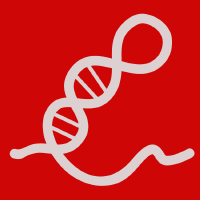Topic Menu
► Topic MenuTopic Editors


Non-coding RNAs in Cancer: Markers in Disease Progression and Therapy
Topic Information
Dear Colleagues,
Non-coding RNAs like miRNA, lncRNA or circRNA have been shown to be important regulators of gene expression. They are involved in regulation of fundamental physiological processes, and increasing evidence showed the significant role of ncRNAs in various diseases including cancer. However, considering the large number of existing ncRNAs, only a part of these molecules has been studied with regard to their role in cancer. In addition to further identification of their specific interactors, the role of ncRNAs as cancer markers and potential therapy targets is of high importance.
The Special Issue would like to focus on the following topics:
- Effect of specific ncRNAs on progression of different cancer entities: underlying molecular mechanisms
- Role of ncRNAs as cancer markers and therapy targets
- Role of circRNAs in cancer (since this ncRNA type has been least studied due to its late discovery)
- Role of competing endogenous RNAs (ceRNA) affecting miRNA action and mRNA expression in terms of tumor progression, diagnosis, and therapy
- Creating a database of lncRNA/circRNA interaction with specific miRNAs targets, as a tool to facilitate studies on the role of ncRNAs in cancer progression and therapy
Keywords
-
ceRNA
-
lncRNA
-
circRNA
-
miRNA
-
mRNA
-
cancer
Participating Journals
| Journal Name | Impact Factor | CiteScore | Launched Year | First Decision (median) | APC |
|---|---|---|---|---|---|

Biomedicines
|
4.7 | 3.7 | 2013 | 15.4 Days | CHF 2600 |

Cancers
|
5.2 | 7.4 | 2009 | 17.9 Days | CHF 2900 |

Current Oncology
|
2.6 | 2.6 | 1994 | 18 Days | CHF 2200 |

Non-Coding RNA
|
4.3 | 9.6 | 2015 | 16.6 Days | CHF 1800 |

Onco
|
- | - | 2021 | 18.3 Days | CHF 1000 |

MDPI Topics is cooperating with Preprints.org and has built a direct connection between MDPI journals and Preprints.org. Authors are encouraged to enjoy the benefits by posting a preprint at Preprints.org prior to publication:
- Immediately share your ideas ahead of publication and establish your research priority;
- Protect your idea from being stolen with this time-stamped preprint article;
- Enhance the exposure and impact of your research;
- Receive feedback from your peers in advance;
- Have it indexed in Web of Science (Preprint Citation Index), Google Scholar, Crossref, SHARE, PrePubMed, Scilit and Europe PMC.

